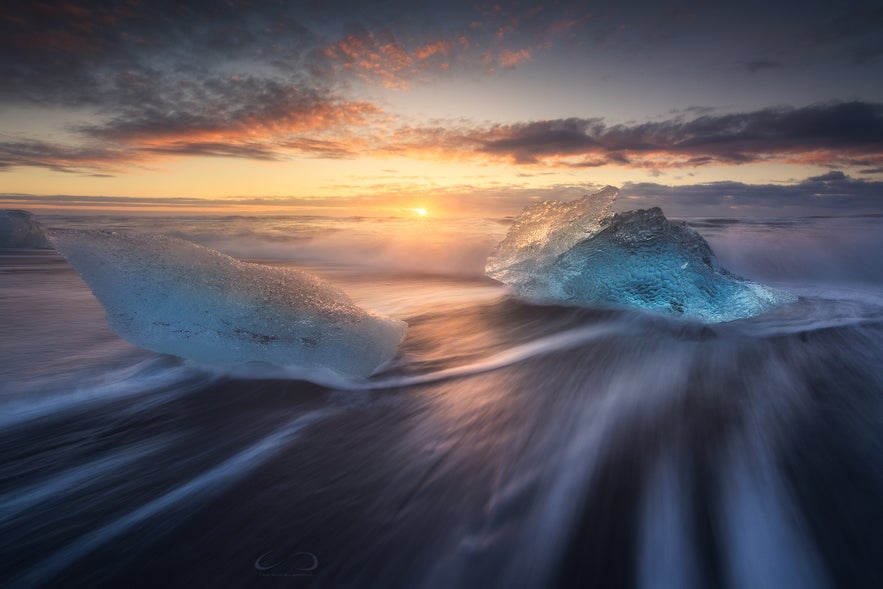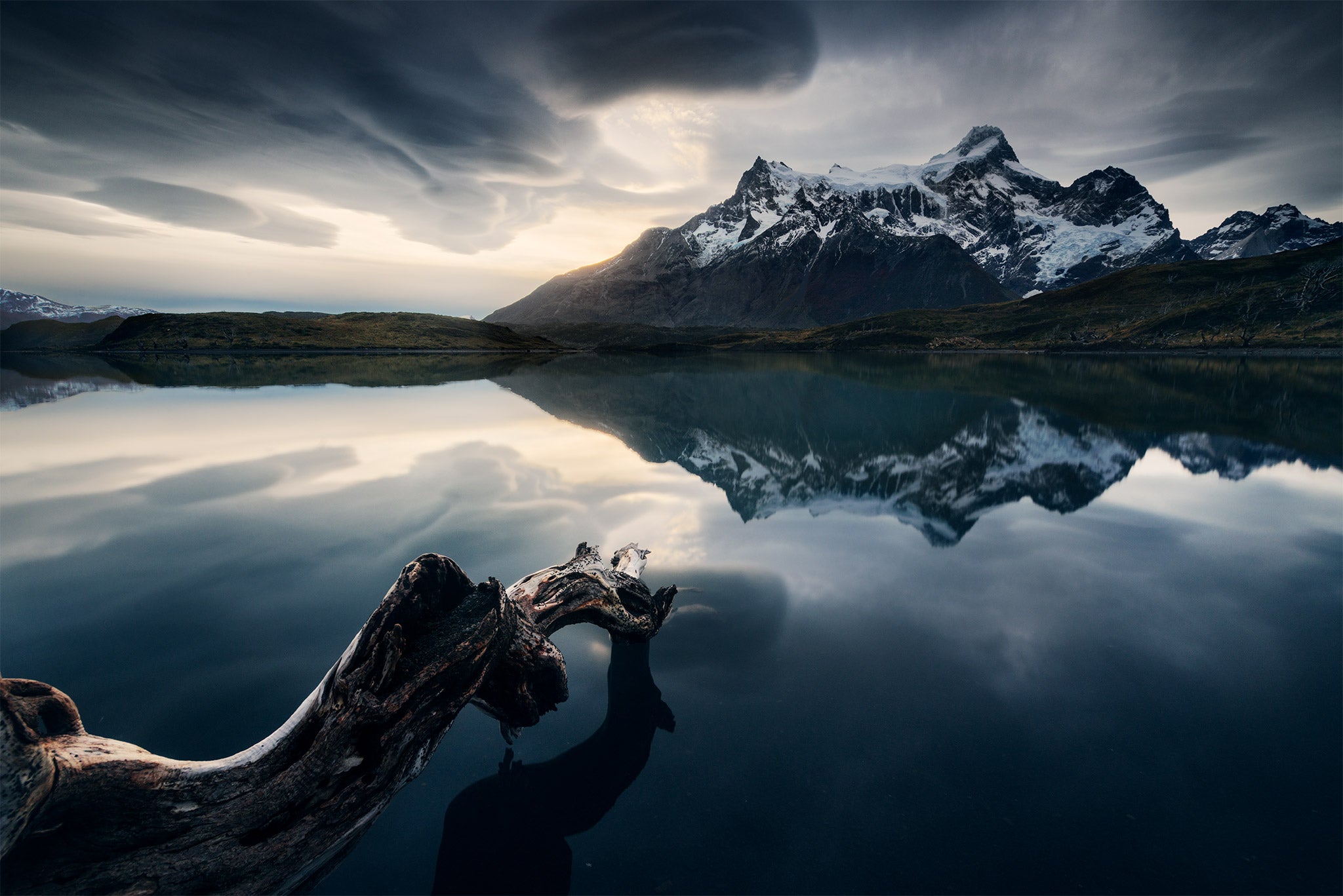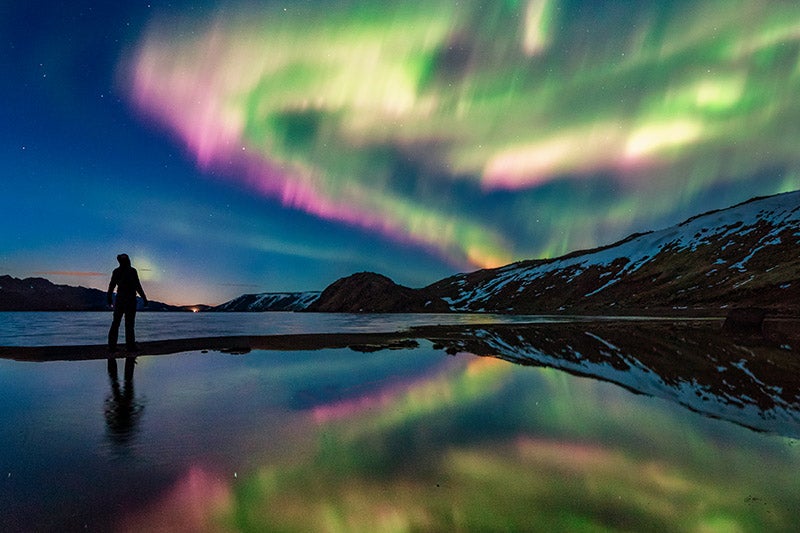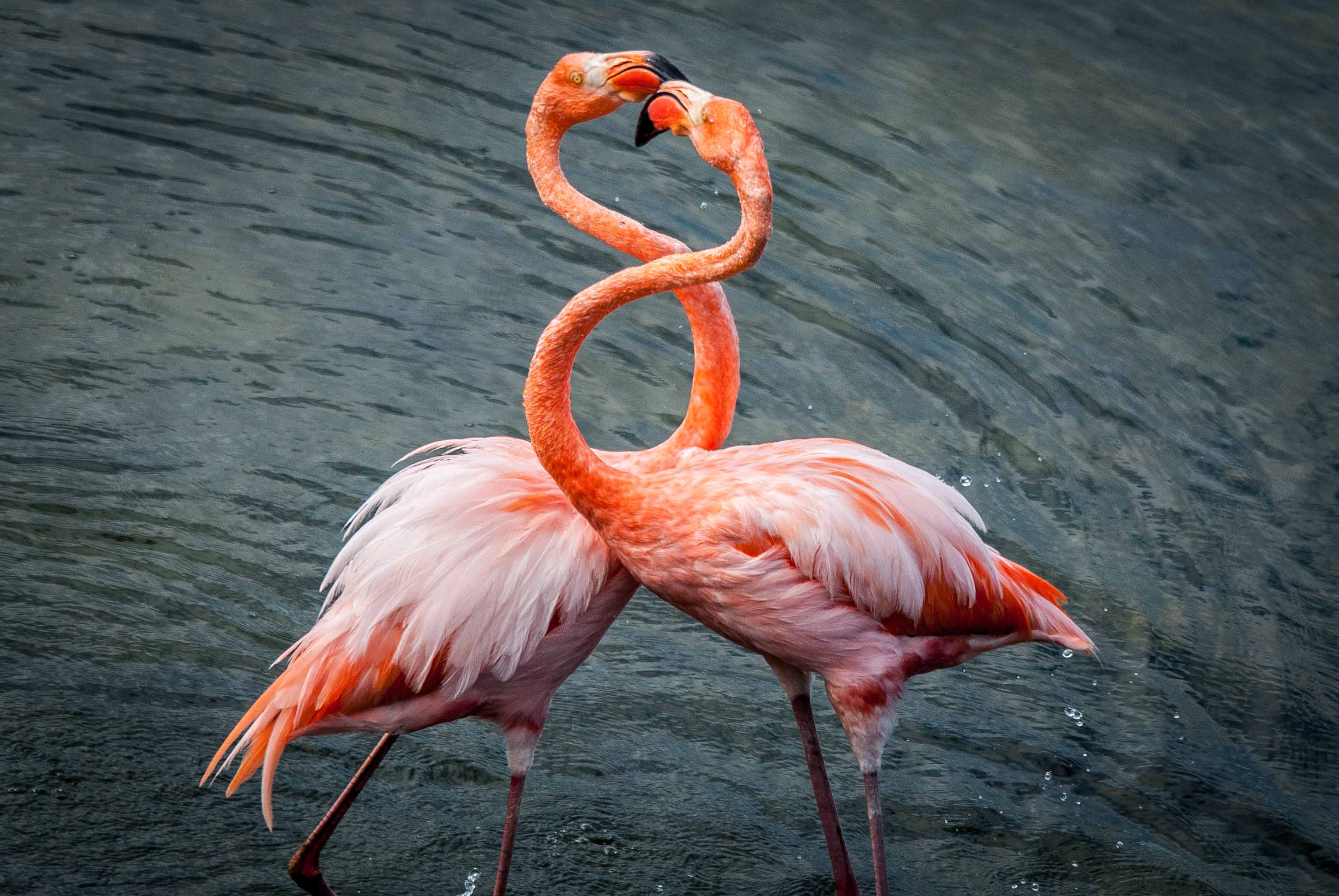
Juggling a day job with the passion for photography and travel; it's something that many photographers do. For Simanta V. Mahanta, a US-based software engineer, it allows him to realise his dream to capture some of the most beautiful locations on the planet.
- Check out these Photographer Interviews
- Explore our range of Croatia Photo Workshops
- Learn all about How to Take Sharp Landscape Photos in Windy Conditions
Sim's photographs are carefully crafted to communicate mood, atmosphere and individuality. Having visited iconic locations in the Lofoten Islands and Iceland, he has worked hard to put his own twist on images to make them uniquely his own.
This week, we caught up with Sim to chat about his creative process, his technical workflow, photographers leading by example and the beauty of capturing the night sky.
 Simanta Mahanta is a travel photographer from India who is based in the United States of America. Photo by: 'Simanta Mahanta'.
Simanta Mahanta is a travel photographer from India who is based in the United States of America. Photo by: 'Simanta Mahanta'.
- See also: Interview with Riddhi Mukherjee
Hello Sim! Thanks for joining us. Tell us a little bit about yourself – where is home and what inspired you to become a landscape photographer?
Hi there! I am from India. I grew up in New Delhi and moved to Texas, United States to pursue college in 2009. I’ve been in Dallas for 10 years now – my current home and base for travel.
I am the happiest driving to a stunning location with my camera and tripod on the passenger seat. Landscape photography is my way of having a conversation with Mother Nature. However, this passion took a while to realise.
 Arctic Playground, Lofoten. Photo by: 'Simanta Mahanta'.
Arctic Playground, Lofoten. Photo by: 'Simanta Mahanta'.
I’ve enjoyed holding a camera in my hand ever since I knew what it did. My grandma was the “OG” nature lover and my father loves traveling. The genes were there! The move to the US actually galvanised my interest in photography. You see, academically, I’ve been a science guy but my latent passion has been in the arts.
In my third year of college, I earned a few bucks and finally purchased a DSLR (Sony A65). I shot anything and everything. I feel this period of “unfocused photography” was necessary to truly identify what I would eventually love doing. The following spring, we did a road-trip to Big Bend National Park. Overall, it was a (fun) disaster but unknowingly, my journey had begun.
I embarked on a quest to explore all the US National Parks. I realised that the American landscape was so diverse, that visiting the parks would be an effective way to experience it all. This goal was the vow that married travel thirst to photography passion. (I’ve visited 53 out of the 62.) Furthermore, the thriving culture of landscape photography in the States opened my eyes to what the virtuosos were doing. I understood there was a lot to learn and an inexhaustible travel wish list. This prospect was very, very exciting.
In 2014, I transitioned to a full-frame DSLR (Nikon D810) and have never looked back since (except to check for bears!).
Do you currently work full-time as a professional landscape photographer or are you juggling your passion with a separate career?
That is a well-phrased question! I am not a full-time professional (yet). I sell prints and offer 1-on-1 post-processing sessions over Skype. I’ve done personal workshops on location too.
My other job is in software engineering (poles apart, I know!). The ultimate goal is to make my passion into a full-time profession and lead workshops.
Tell us about your favourite place to photograph and the reason why you have such a deep connection with it.
Iceland (duhhh!) is a shooting paradise! I would make any number of return trips but my personal favourite location would be the Lofoten Islands of Norway. Firstly, I was blown away by the sheer natural beauty!! Picture perfect. The winter Arctic light was magical. I was fortunate to experience an Aurora storm on the very first night – that will always be special. It was so vivid – the entire landscape was illuminated in green.
 Aurora, Lofoten. Photo by: 'Simanta Mahanta'.
Aurora, Lofoten. Photo by: 'Simanta Mahanta'.
Then, I was impressed by the density of shooting opportunities. It’s not a very big region but it’s a playground for photographers. In one day, you can possibly get an entire catalogue of shots!
Another reason is that I learned a lot in Lofoten. That’s where I first met one of my inspirations – Daniel Kordan. I believe that when you’re pursuing your passion, at some stage, you need to have a conversation with an established exponent of the art. I absorbed some crucial information from him that has influenced my photography today.
What part of the creative process do you enjoy most, and what do you find most challenging?
I like post-processing – for two reasons.
A) It helps me visualise the final look of the photo I am about to take. If I can identify the motif, then I will make purposeful adjustments in-field. It results in a more efficient process where you are not taking dozens of exposures of the same frame. Moreover, I know how much flexibility I will have from a technical perspective. For example, I need not use a filter if I know I can extract greater dynamic range in post.
 Goðafoss, Iceland. Photo by: 'Simanta Mahanta'.
Goðafoss, Iceland. Photo by: 'Simanta Mahanta'.
B) Processing helps infuse a photograph with the intangibles. You can communicate the mood, emotions and sensations that a photographer feels on location. Additionally, it is a tool to express your individuality and panache. Two photos could be taken from the same spot and in the same conditions but the post processing can differentiate the two.
The most challenging aspect is to remain calm – regardless of the circumstances. Maybe you’re suddenly in the middle of an Aurora storm or strong winds are making life challenging. Accepting the situation and adjusting – that is something I keep reminding myself. Every time I visit a new location, I feel rather excited by all the elements at play. An excited mind struggles to capture the “keeper” shot. The other advantage of keeping calm is that you’re less likely to damage or lose your gear!
Do you have a favourite subject which you prefer to photograph? What kinds of atmospheres do you seek to capture in your images?
I absolutely love night skies! Always game for shooting the Milky Way. I’ve been fascinated with the cosmos since childhood and find its mysteries tantalising. I’m also drawn to waterfalls and “stormscapes”.
I have a penchant for moody or dramatic atmospheres. Settings emoting a sense of wonder speak to me; always looking for that touch of surrealism.
- See also: Ultimate Guide to Milky Way Photography
What is the narrative that you would like to tell with your photography? How do you use your photography to do that?
There are two kinds of photographs I capture. One, where the photo is the climax of the journey of a particular story. Two, where the photo is a representation of its ecosystem.
The former is a culmination of the effort, challenges and dedication we put into our work. These experiences enrich the imagery we chase. Often, the resulting image is in contrast to the journey. You could have traversed through challenging conditions but the photo would be of absolute serenity. I portray this emotion by looking for balance in my compositions and transitions from dark to light. The Milky Way shots are a good example.
 Milky Way, California. Photo by: 'Simanta Mahanta'.
Milky Way, California. Photo by: 'Simanta Mahanta'.
The latter is an ambassador of each of the unique places. I seek to identify the quintessential ingredients that define a location. For instance, I find Goðafoss (Iceland) to have this aura of divinity around it. The pure white of fresh snow and pristine blue of glacial water – I wanted to enhance those in my exposure to make a viewer feel as if he were actually there.
What advice do you have about using visuals to tell a story and engage an audience?
Emote. Let your emotions flow through your imagery. Your imagery should not just be a recording of pixel data but one with depth that would make the audience consider your work beyond its face value. If you have an artistic vision, pursue it. Do not feel encumbered by convention.
What kind of work goes into the construction of your photographs? Do you find it difficult to maintain photographic reality through the fine art process?
It begins with research. I start with the subject I want to photograph and then build an itinerary around it. Apps like Google Earth are good for a virtual orientation. I prefer to scout a location before prime time. This also helps understand the local ecosystem and experience the raw beauty without a lens. That initial excitement (which I mentioned previously) is best felt before you start clicking. This is especially important in locations like the Diamond Beach (Iceland).
Once I have the image I am after, I move on to other spots or experiment. I do not like spending more time than required at one spot. Sometimes, I’ll even pack the gear and immerse myself in the surroundings.
 Reine Dreaming, Lofoten. Photo by: 'Simanta Mahanta'.
Reine Dreaming, Lofoten. Photo by: 'Simanta Mahanta'.
The last stage is post-production. Here, I will connect the “raw” image to the artistic vision. This phase can take anywhere from 30 mins to 3 hours.
Initially, when I was still finding my groove, I struggled with the balance between digital photography and fine art. I realised this confusion stemmed from a fear of acceptance. I knew I was never a purist and once I accepted that, I was free to express. I asked myself – what makes me want to shoot? It’s about sharing my perspective.
Describe the technical workflow that you do in post-production. How do you utilise software to distil emotion and meaning in your photographs?
Aha! I like the build-up to this question!
I use Adobe Lightroom (LR) and Photoshop (PS). I do not use presets but prefer to treat each image on its merit.
Lightroom: This is where I set the mood of the image. Apart from noise reduction and profile corrections, I will adjust the luminosity sliders and affect foundational colour tones. The adjustments are simple but the result can be profound. Gradients are especially useful to shape the photograph prior to treatment in PS.
 Stokksnes Blizzard, Iceland. Photo by: 'Simanta Mahanta'.
Stokksnes Blizzard, Iceland. Photo by: 'Simanta Mahanta'.
Photoshop: I like using layers… and more layers; a non-destructive workflow. I make use of adjustment layers in conjunction with luminosity masks. What I like about Photoshop is that there are many ways to achieve the same result.
The overall goal is simple: to create transition and depth. Transitions can be from dark to light, from cooler white balance to warmer tones, from contrasted to diffused and from sober colours to saturated. Of course, some dodging/burning is applied to accentuate micro-contrast and colour.
Let me give you an example. If I’m shooting a beautiful winter sunrise, I want to convey the warm sunlight I feel on my face. To do that, I’ll overlay subtle warm colour while maintaining cool tones in the shadows. Depending on the subject, I’ll accentuate certain areas. For instance, I recently drove through a thunderstorm in Kansas. Mammatus clouds formed over these hay bales. The clouds added another dimension to the scene and I knew I was going to accentuate those in post to bring out the drama.
I’d love to share more of my secrets – but we’ll have to schedule a processing session for that! : )
How do you keep your artistic voice unique to you?
I think the process has to be organic. If you set out from the get go with a mentality “I have to be different”, you might struggle to identify who you are as an artist. I started out trying to emulate inspiring photographers; that is how I learned. But instead of copying, I incorporated what I liked into my own evolving workflow. Took a few years, I’ll admit, but I eventually found my own voice.
 Swamps, Southern USA. Photo by: 'Simanta Mahanta'.
Swamps, Southern USA. Photo by: 'Simanta Mahanta'.
To be honest, I cannot articulate my style in words! But I intrinsically know what I like doing – and I stay true to that. I pursue what fascinates me and that nurtures my individuality.
What are your thoughts on the societal consumption of images? Do you think there are any pitfalls to over-consuming imagery in terms of how we perceive and relate to objects or nature?
It’s a double-edged sword, isn’t it? I’ll talk about the pitfalls first.
There is an obsession with getting the “perfect shot” in order to go viral on social media. This is encouraging a lot of people to travel to delicate areas that are not capable of handling that much traffic. Moreover, in all this rush, you tend to neglect the most important reason you should be there – to enjoy the natural beauty.
 Tesseract, Iceland. Photo by: 'Simanta Mahanta'.
Tesseract, Iceland. Photo by: 'Simanta Mahanta'.
On the other hand, the more images you are exposed to, the greater is the likelihood of being underwhelmed when you physically arrive at the location. The average traveler may not realize that landscape photographers will present the best version of a location. The same stunning location could even feel unfamiliar from the photos.
Now, the positives. With so much stress in our lives, imagery on social media can provide that moment of escape. It’s a good feeling if my photo can improve someone’s forgettable day. Additionally, this is an opportunity for influencers to spread positive messages on conservation and responsible travel.
Given the current travel restrictions all around the world with COVID-19, have you faced any particular challenges with your photography? How do you stay motivated to continue shooting?
Definitely. I have essentially let this year go in terms of travel! I was fortunate to complete another trip to Iceland right before COVID-19 fulminated globally. But, I’ve had to cancel international trips to Morocco, Spain and India, and domestic trips to New Mexico and the Pacific Northwest.
However, I do not feel demotivated. It is important to respect the gravity of these times and do what is required to secure a safer, healthier future. Besides, I have enough of a backlog of photos to keep me busy!
 Cannon Beach Night, Oregon. Photo by: 'Simanta Mahanta'.
Cannon Beach Night, Oregon. Photo by: 'Simanta Mahanta'.
I am taking this opportunity to explore more locally. I’ve been driving within a 2-hour radius of my home to explore the countryside. The things I’ve found sequestered in these places are amazing! The advantage of living in Texas is that you could be staying in a metropolitan area, but you are only an hour away from a dark sky!
I should mention Comet Neowise has been a blessing. I think it has lifted every landscape photographer’s spirits (in the Northern Hemisphere at least).
- See also: Beginner's Guide to Deep Sky Photography
These days, more and more young people are expressing themselves through photography. Do you have any advice or thoughts on how they can make their presence felt?
Newcomers on the scene are prone to following trends and maximising the “Insta-worthiness” of their photography. That’s understandable. My advice would be to not be overly concerned on becoming popular or blatantly copying what someone else is doing. (First-movers advantage, after all!)
 Countryside, Kansas. Photo by: 'Simanta Mahanta'.
Countryside, Kansas. Photo by: 'Simanta Mahanta'.
It’s easy to get lost in the world of social media but do not let that dominate your decisions. We spoke about emoting, developing a narrative and voicing the artist in you. Pursue your photography vision sincerely and someone out there will eventually recognise you.
Today, it’s unbelievable how you are potentially only a DM away from connecting with anyone. Try to connect with people you follow. You will be surprised how many of them are willing to have meaningful conversations with you!
Landscape and nature photography can have large impacts upon the environment, not just in terms of the damage that can be done in fragile areas but also the carbon footprint caused by travel. Can you talk a little bit about how photographers can minimise their impact while using their work in a positive way, such as to further conservation efforts? Can photography make a difference in the world?
You’ve touched an important subject!
I believe landscape photography can provide a paradigm-shifting perspective to the general audience about our environment. Once we acknowledge and start appreciating the beauty of something, the more empathy we will develop towards it, and hence, the more concerned we’ll be about its preservation.
 Multnomah, Oregon. Photo by: 'Simanta Mahanta'.
Multnomah, Oregon. Photo by: 'Simanta Mahanta'.
Photographers can lead by example. They can influence through social media, using their imagery as a conduit for communicating the need to respect our environment. In-field, I advocate respecting signs that ask visitors to not encroach on certain areas. On the web, photographers could avoid posting images that encourage others to disregard warnings. Alternatively, they could mention in their captions that they respected the signs and took the photograph in a non-destructive way.
When it comes to traveling, photographers can reduce their carbon footprint by taking public or shared transport, opting for eco-friendly lodging and partnering with organisations or companies that promote conservation. Share resources with co-travellers whenever possible.
- See also: 25 Tips for Creative Beach Photography
Thank you for sharing your thoughts with us today. To finish up, tell us a bit about what you are working on at the moment. Do you have any particular plans for the future?
Thank you for this opportunity to share my perspective with your audience! Your questions have been insightful and well thought out. While I was answering them, it felt like an introspection that has provided me more clarity.
Currently, I am rounding up my portfolio on Comet Neowise! This past week, I have been driving to earmarked locations to capture the beauty of the comet with a complement of earthly foregrounds.
For the foreseeable weeks, I will continue exploring my “backyard.” You can find out what I’m up to on my Instagram stories too.
Finally, I am considering working on a post-processing tutorial to upload on my website (simexposure.com). I’ve been getting a lot of requests to share my workflow. So do check back!
Wish you all good health and safe travels!
For more information on Simanta Mahanta's work, you can visit his website or find him on Instagram.
Immerse yourself in nature and explore as you travel with your camera on a guided experience, just like Simanta! Check out our range of international photo tours and photography workshops.












